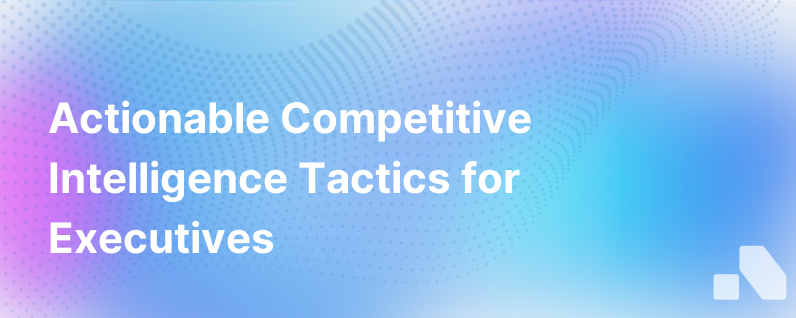
In today's hyper-competitive market, information can be a game-changer. One way businesses can gain an edge over their rivals is through competitive intelligence (CI). Competitive intelligence entails gathering, analyzing, and using information about competitors to make strategic decisions. Against popular belief, it's not about spying; rather, it's a strategic method for staying ahead of the competition.
Implementing competitive intelligence, however, can be overwhelming for companies new to the practice. Therefore, we've put together a comprehensive guide with actionable items to help you kick-start your competitive intelligence journey.
Action Item 1: Identify your Competition
Start by identifying your real competition - both direct and indirect. Direct competitors offer the same services as you within the same markets, while indirect competitors may provide a similar product to a different market or a different product that solves the same problem.
In identifying competitors, look at the variety of aspects including their service offerings, target markets, customer perceptions, and market share. Use this basis to form your competitive set and structure your competitive intelligence program.
Action Item 2: Create a Competitive Analysis Framework
Designing a competitive analysis framework will help you systematically analyze the strengths and weaknesses of each competitor. Include factors like product offering, pricing strategy, marketing strategy, customer reviews, financial performance, and more.
This step requires researching your competitors' products and services, as well as their operations, sales, and marketing techniques. A good framework will provide valuable insights for building competitive strategies.
Action Item 3: Initiate External and Internal Data Collection
Gathering competitive intelligence involves collecting and analyzing data from external and internal sources.
External sources include competitor websites, social media profiles, review platforms, databases, market reports, conferences, and more. Use these resources to gauge your competitors' operations, their product performance, pricing structure, customer satisfaction, and service areas.
Also, never underestimate the value of internal data. Sales teams, customer service, and other client-facing roles often have valuable insights into the competition. Create a process for sharing and documenting these insights to boost your competitive intelligence efforts.
Action Item 4: Conduct SWOT Analysis
Once you've collected the necessary data, you need to analyze it. An effective way to do this is through a SWOT analysis, where you identify each competitor's strengths, weaknesses, opportunities, and threats.
This analysis will help you understand how to maximize your strengths, improve your weaknesses, seize available opportunities, and mitigate potential threats.
Action Item 5: Keep Your Teams Informed
The insights gathered from competitive intelligence are valuable when shared with key stakeholders within your organization. Ensure there is a clear means of communication for these insights to reach those who can action them, such as sales, marketing, and product development teams.
Regularly sharing competitive intelligence with your teams ensures your company stays agile and ready to adjust strategies in response to shifts in the competitive landscape.
Action Item 6: Conduct Regular Updates
Business environments change rapidly. Competitors could launch new products, change pricing strategies, or pivot their services. Thus, updating your competitive intelligence is crucial to maintaining an accurate view of the competitive landscape.
Consider setting up a continuous intel program, and make regular updates a key part of your strategy. Adhere to a schedule of regular audits, reviews, and updates to your competitive intelligence program to keep it effective.
Action Item 7: Leverage Technology
Harnessing the power of technology can take your competitive intelligence program to the next level. From AI-powered tools to automated surveillance and tracking software, these resources can help you gather, analyze, and disseminate competitive intel quickly and efficiently.
For example, Aomni leverages AI to provide real-time competitive insights - creating a streamlined process for maintaining up-to-date intelligence. With the right tools in place, you can ensure your competitive analysis is as accurate and comprehensive as possible.
Conclusion
A well-executed competitive intelligence program can significantly enhance your business strategy, providing you with insights and actionable knowledge about your competition. Starting with these seven action items, you can lay a strong foundation for a CI program that will bolster your strategic planning, product development, marketing, and sales efforts.
As we evolve into an era of heightened competition, the ability to adapt quickly to market changes becomes crucial. And competitive intelligence plays a vital role in fostering that adaptability. While gathering and analysing CI can seem daunting, the potential gains significantly outweigh the effort – and with the right tools like Aomni, you can make the process seamless and effective.